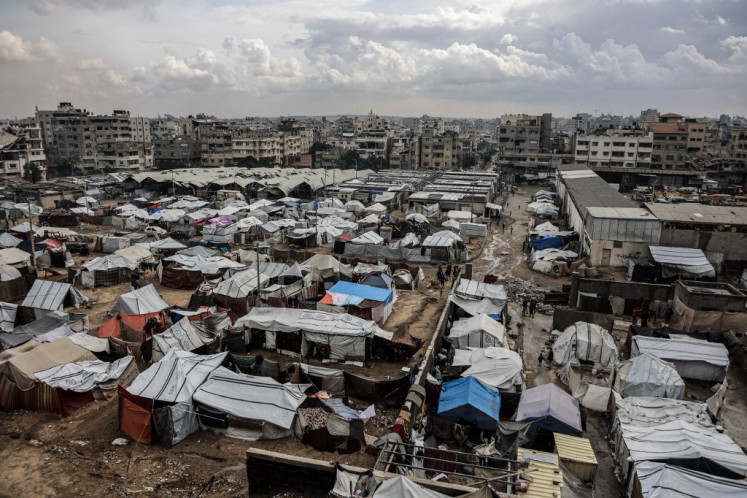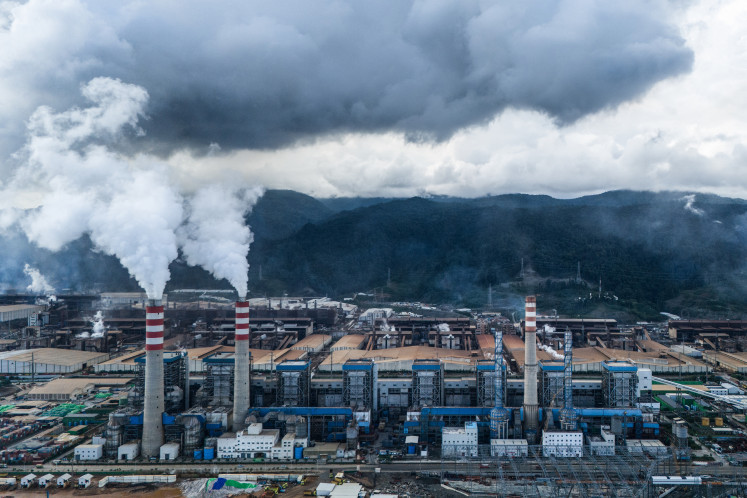Popular Reads
Top Results
Can't find what you're looking for?
View all search resultsPopular Reads
Top Results
Can't find what you're looking for?
View all search resultsIndonesian tropical rainforests and climate change
Indonesian tropical forests (ITR), covering an area of about 119 million hectares, is an area that presents opportunities for entrepreneurs and investors of green planet
Change text size
Gift Premium Articles
to Anyone
I
ndonesian tropical forests (ITR), covering an area of about 119 million hectares, is an area that presents opportunities for entrepreneurs and investors of green planet. The ITR is extremely rich in flora with diversity and endemism value totaling 40. The rich species diversity includes 3,000 species of timber, and only 20 species is exploited commercially and by trade.
The ITR are changing at an unprecedented rate and almost extinct in many locations due to illegal or over logging.
Due to its bio-geographical, ecological and evolutionary factors, Indonesia with a large swathe of coastal areas and tropical rainforests is the international people’s hope. The world people placed their hope in the ITR, and the customary public perception is Indonesia should stay green in terms of REDD (Reduce Emission from Avoided Deforestation and Forest Degradation) for stabilizing climate changes and maintaining human welfare.
Indonesia is the concern of the Oslo meeting as the core of carbon stock. The ITR services and the provision of carbon are vital for the world’s health and are the demand of the people today and tomorrow.
Clearly, our planet needs the ITR. Forestry experts are in full agreement to saving the ITR and worldwide knowledge on the ITR is improving all the time.
Oslo delegations recognized the importance of the ITR for the world, and is the primary key to bilateral-multilateral cooperation. It was projected to decrease due to climate change. The ITR are in danger. The Forestry Ministry has recently demonstrated its eagerness to invest in, for example, protected adat (traditional) forests and mixed-forest gardens or locally called tembawang; man-made forests and/or forest rehabilitations, or known as hutan tanaman industri and hutan kemasyarakatan.
Also, Indonesia can discover further opportunities in the carbon trade from different forest types and their biological richness. Protection systems in Indonesia are increasing widely from coastal to mountains. Forest’s restoration-rehabilitation, coastal planting and conservation of natural resources directly related to the carbon sink, biodiversity and water catchments system are national activities.
Many examples also exist in successful partnerships involving local governments, companies and community organizations in the forestry sector. The market for carbon-saving and over-logged forest areas, and mangroves rehabilitation and coastal planting technologies is attracting growing interest and many private-sector forestry companies involved.
It is important to note that fresh-water, coastal and marine water resources issues are intrinsically linked in the frame of ITR-climate changes. Water management can no longer rely on short-term approaches in which groundwater, rivers, lakes, coastal areas and marine water are dealt with as separate entities.
Indonesia, with 70 percent being water is a World Bank Forest Carbon Partnership Facility (WB-FCPF) target. The International Panel on Global Warming have climate change concerns too, as sustainable land-use and water management increases the vulnerability of human health and extreme weather.
In response to climate change and deforestation of the ITR, Indonesia reactivates the creation of the Indonesian Biodiversity Strategy and Action Plans (IBSAP) 2003-2020, a biological study of flora and fauna, their habitat’s conservation program, the purpose of which is to accelerate through inventory of her biodiversity through the use of para-taxonomists and to find ways to use the biodiversity sustainably.
Debates concerning the nature of the ITR — for public good or economic good — and fears relating to the impact of globalization and/or deforestation are over. Partnerships of governments, local communities, the private sector and other stakeholders are essential elements, which have contributed to the sustainability of the ITR. A healthy ITR, its flora and blue oceans will manage the carbon and water cycle naturally with no net loss for human welfare.
The relationship between the green planet— green ITR and coasts — and the blue ocean is extremely urgent for future life. Implementation of the Sulu-Sulawesi Marine Eco-region by Indonesia, Malaysia and the Philippines, the countries of the plant geographical unit known as Malesia, is the heart of tropical rainforests in the world, and is an example for strengthening local community participatory.
Copenhagen delegations appreciated Indonesia (forests and oceans) as the core of mega-biodiversity center in the world. I like to call our 28.26 million hectares of conservation areas our “biodiversity factories”, because that is really what they are, or biodiversity storehouses, warehouses with the potential revenue that can come from them viz. carbon trades and WB-FCPF compensation. National parks and reserves are a tremendous educational potential.
It means learning about nature with nature, it means that we adopt a new mentality in the Indonesian educational process and we rapidly move towards a bio-literate population in the country instead of only a literate population. The importance of good governance of Indonesia in this regard cannot be overemphasized: Great progress is being made, and the legislative and policy framework supports efficient and equitable allocation and use of natural resources. Indonesia is in the position of the era of climate change.
We shall encounter in a microcosm many of the philosophical questions of today. Of course change is of the very essence for ecosystems, and ecologists must remain continually aware that what they are currently studying is but one glimpse of the continually varying, kaleidoscopic pattern of life.
The writer is a professor of mangrove ecology at the Center for Oceanological Research and Development, the Indonesian Institute of Sciences, Jakarta.










